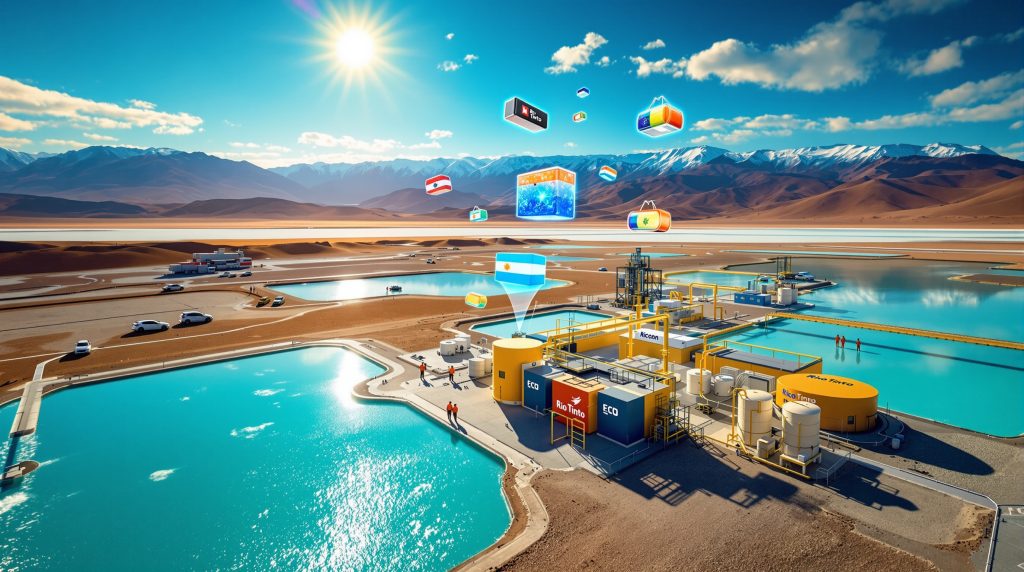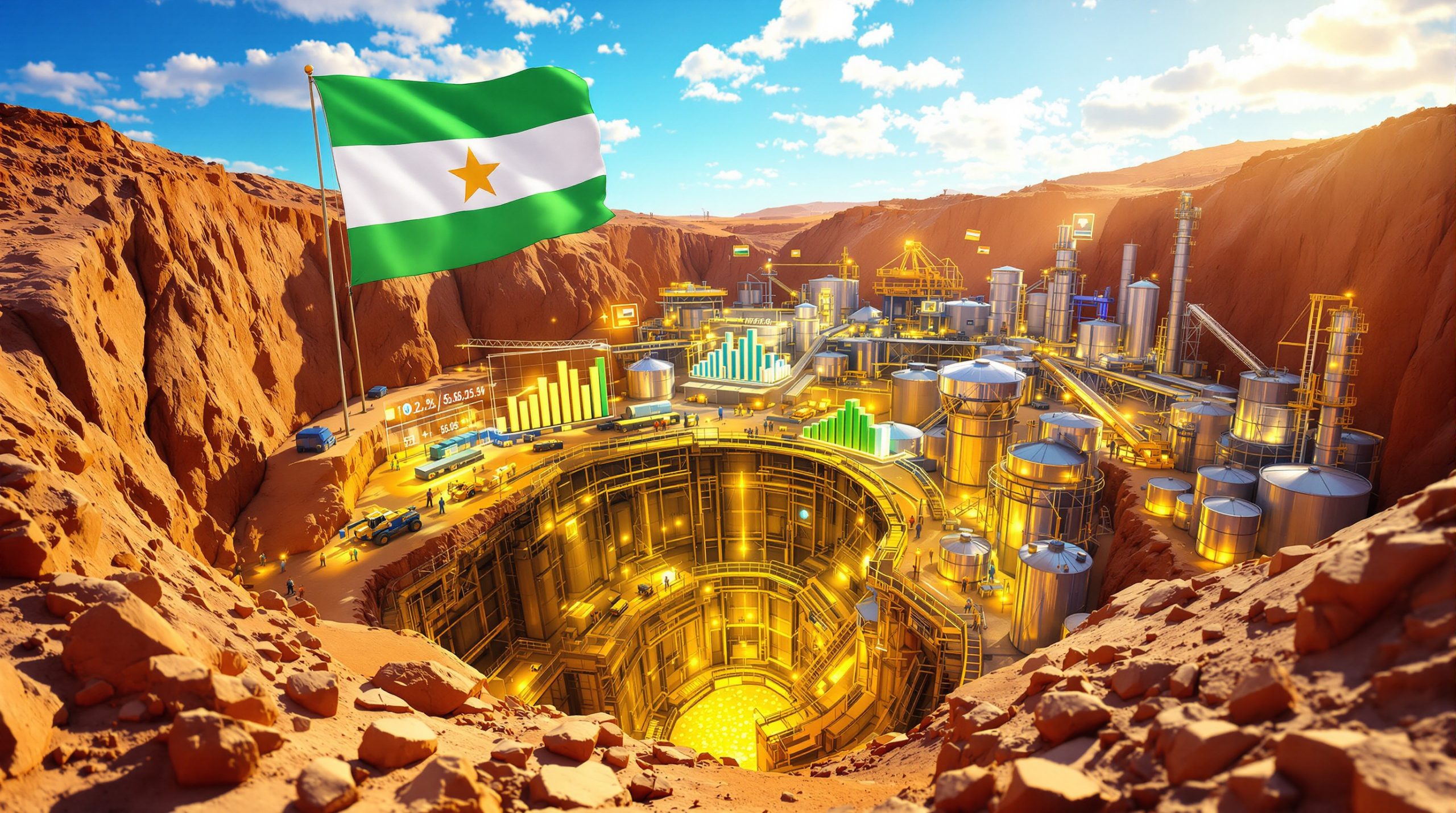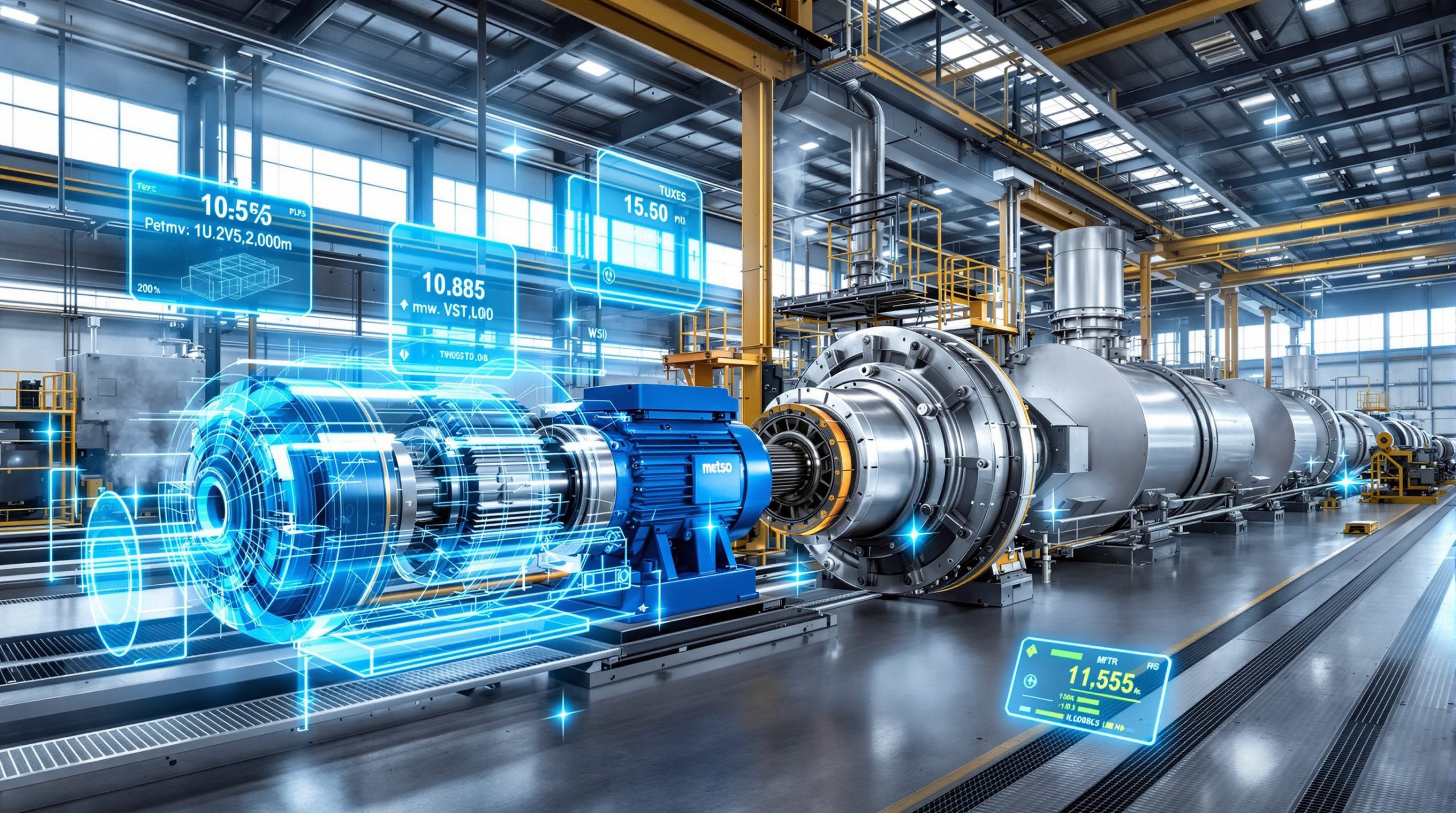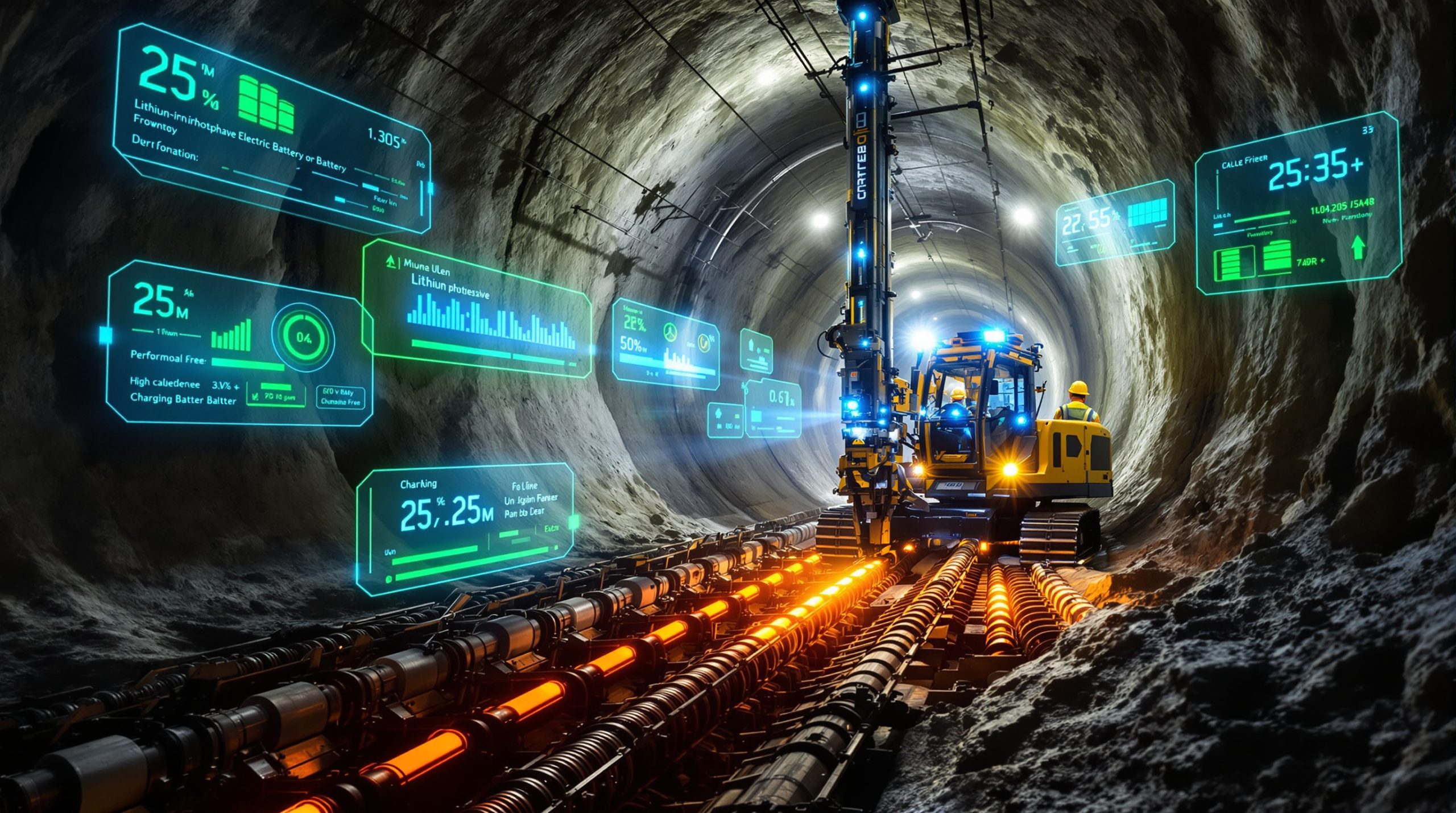What Makes the Rincón Lithium Project Strategically Important?
A Cornerstone Investment in Argentina's Lithium Sector
Rio Tinto's Rincón project stands as one of the most significant lithium developments in Argentina, located in the mineral-rich Salta province. The project recently received its Declaración de Impacto Ambiental (Environmental Impact Declaration or DIA) from Salta's Secretariat of Mining and Energy, marking a crucial milestone in its development journey. This regulatory approval enables Rio Tinto to proceed with salmuera (brine) extraction and the production of battery-grade lithium carbonate, positioning the project as a cornerstone of Argentina's growing lithium industry.
With this approval, Salta province has strengthened its dominant position in Argentina's lithium sector, now hosting four of the seven nationally authorized lithium production projects. This concentration of lithium development in one province demonstrates the region's geological advantages and regulatory expertise in Argentina lithium brine insights.
Transformative Scale and Production Capacity
The rio tinto litio proyecto rincón de salta's scale is impressive by global standards, with plans to produce 50,000 tonnes of battery-grade lithium carbonate annually. This production capacity will be achieved through a phased approach, beginning with the existing 3,000-tonne pilot facility (known as "Rincón 3000") and expanding to the full-scale operation.
When combined with potential efficiency improvements, the total production capacity could reach 60,000 tonnes annually, making it one of the largest lithium operations in South America. These improvements are expected to generate an additional 7,000 tonnes of production capacity without requiring new infrastructure investments, highlighting the efficiency potential of the operation.
Strategic Positioning in the Lithium Triangle
The project's location in Argentina's portion of the Lithium Triangle (which spans Argentina, Bolivia, and Chile) provides strategic advantages in accessing high-quality lithium resources. The Salar del Rincón offers favorable geological conditions for lithium extraction, with the project leveraging advanced lithium extraction innovations to maximize resource recovery while minimizing environmental impact.
This positioning allows Rio Tinto to establish a strong foothold in one of the world's most lithium-rich regions at a time when global demand for battery materials is accelerating due to the energy transition and electric vehicle adoption.
How Is the Project Being Financed and Structured?
RIGI Framework: A Landmark Approval
The Rincón project achieved a significant milestone by becoming one of the first mining initiatives approved under Argentina's Régimen de Incentivos para Grandes Inversiones (RIGI) – the Large Investment Incentive Regime. This approval, formalized through Resolution 735/25 published in Argentina's Official Gazette on June 3, 2025, establishes a comprehensive framework for the project's development and operation.
The RIGI application was submitted on February 25, 2025, and received approval on May 30, 2025, demonstrating the streamlined regulatory approach Argentina is taking toward strategic mining investments. The framework provides important fiscal stability and operational certainty for the project's multi-decade lifespan.
Investment Commitment and Economic Impact
Rio Tinto has committed to investing US$2.724 billion in the Rincón project, representing one of the largest single investments in Argentina's mining sector. This substantial commitment includes:
- First-year investment of US$516.96 million
- Second-year investment of US$776.54 million
- Total initial investment of US$1.29 billion, exceeding the 20% minimum threshold required under RIGI regulations
The investment timeline extends to June 30, 2029, as the deadline for completing the minimum required investment, though production is expected to commence well before this date. This phased investment approach aligns with the project's modular development strategy and allows for capital deployment to be optimized based on operational learning.
Employment Generation and Regional Development
The project is expected to create significant employment opportunities in Salta province, with Rio Tinto committing to:
- 506 direct jobs during construction and operation
- 1,479 indirect jobs through supply chain and service activities
- Skills development programs for local communities
- Preference for local suppliers where technically and commercially feasible
These employment commitments form a crucial component of the project's social license to operate and its contribution to regional economic development. The focus on local workforce development will help ensure that economic benefits are distributed throughout the communities surrounding the project area.
What Technical Innovations Define the Rincón Project?
Direct Lithium Extraction: A Technological Leap
The Rincón project employs Direct Lithium Extraction (DLE) technology, representing a significant advancement over traditional evaporation pond methods. This innovative approach offers several advantages:
- Reduced water consumption compared to conventional methods
- Smaller physical footprint and environmental impact
- More consistent product quality and higher recovery rates
- Accelerated production timelines compared to evaporation-based extraction
- Reduced effluent generation and improved resource efficiency
The implementation of DLE technology at Rincón demonstrates Rio Tinto's commitment to sustainable resource development and technological innovation in the lithium sector. While traditional lithium extraction in the region has relied on extensive evaporation ponds that can take 18-24 months to concentrate lithium, DLE can dramatically reduce this timeframe while also improving recovery rates.
Modular Development Approach
The project follows a modular development strategy, with distinct phases that build upon operational experience and technological refinement:
- Rincón 3000: The initial 3,000 tonne per annum pilot facility, already in operation
- Rincón Full Potential – Phase 1: First 25,000 tonne expansion
- Rincón Full Potential – Phase 2: Second 25,000 tonne expansion
- Efficiency Improvements: Additional 7,000 tonnes through process optimization
This phased approach allows for iterative learning and continuous improvement, reducing project risk while maximizing resource recovery and operational efficiency. By starting with a smaller pilot facility, Rio Tinto can refine its extraction and processing methods before scaling to full production capacity.
Battery-Grade Production Capabilities
The Rincón facility is specifically designed to produce battery-grade lithium carbonate, meeting the stringent quality requirements of electric vehicle and energy storage manufacturers. This high-purity product commands premium pricing in global markets and positions Rio Tinto as a preferred supplier to the rapidly growing battery industry.
The ability to produce battery-grade lithium carbonate directly at the project site represents an important competitive advantage, eliminating the need for secondary processing facilities and reducing transportation costs and carbon footprint.
How Did the Project Navigate Environmental Approval?
Comprehensive Environmental Assessment Process
The environmental approval process for the rio tinto litio proyecto rincón de salta involved a rigorous, multi-disciplinary evaluation coordinated by Salta's Secretariat of Mining and Energy. This process included:
- Detailed environmental and social impact assessments
- Technical reviews by specialized government agencies
- Hydrological studies to evaluate water resource impacts
- Biodiversity assessments and conservation planning
- Air quality and emissions modeling
- Waste management and materials handling protocols
The comprehensive nature of this assessment reflects the increasing scrutiny applied to lithium projects and the evolving standards for environmental performance in the mining sector. The project received its first DIA approval in January 2024 via Resolution 09/23 for the initial 3,000-tonne facility, providing a foundation for the expanded operation now approved.
Community Consultation and Indigenous Engagement
A cornerstone of the approval process was extensive consultation with local communities, including indigenous groups with traditional connections to the project area. Key elements included:
- Public hearings held in Olacapato on July 29, 2025
- Formal consultation with community representatives and local organizations
- Transparent information sharing about project impacts and benefits
- Incorporation of community feedback into project design and planning
- Ongoing dialogue mechanisms for the operational phase
This consultative approach aligns with international best practices for community engagement and reflects Rio Tinto's commitment to maintaining its social license to operate. The involvement of the Secretariat of Indigenous Affairs in the review process demonstrates the priority placed on respecting indigenous rights and interests in the project area.
Water Management and Conservation
Water management represents a critical aspect of the project's environmental strategy, particularly given the arid conditions of the Puna region. The DLE technology employed at Rincón offers significant advantages in water conservation compared to traditional evaporation methods, with comprehensive monitoring and management systems to ensure sustainable water use throughout the project lifecycle.
The involvement of the Secretariat of Water Resources in the environmental assessment process highlights the importance placed on responsible water management, with specific requirements incorporated into the project's environmental commitments and monitoring plan.
What Economic Benefits Will the Project Deliver?
Direct Economic Contributions
The Rincón project will generate substantial economic benefits for Argentina at multiple levels:
- Tax revenue for national and provincial governments
- Export earnings that strengthen Argentina's trade balance
- Royalty payments to Salta province
- Direct wages and salaries for the local workforce
- Procurement spending with Argentine suppliers
- Infrastructure development with broader economic benefits
These economic contributions are particularly significant given Argentina's ongoing efforts to attract foreign investment and develop its natural resource sector. The inclusion of the project in the RIGI framework demonstrates its strategic importance to the national economy.
Supply Chain Development and Industrial Capacity
Beyond direct economic impacts, the project is expected to stimulate development of specialized supply chains and technical capabilities within Argentina's industrial sector. This includes:
- Engineering and technical service providers
- Equipment maintenance and operational support
- Logistics and transportation services
- Chemical reagent suppliers and processors
- Quality control and laboratory services
This ecosystem development creates lasting economic value that extends beyond the immediate project boundaries. By fostering the growth of specialized service providers and technical capabilities, the project can help catalyze broader industrial development in the region.
Strategic Positioning in Global Battery Supply Chains
The Rincón project strengthens Argentina's position in global battery metals investment outlook at a time of rapidly growing demand for battery materials. By establishing a major production hub for battery-grade lithium carbonate, the project enhances Argentina's strategic importance in the global energy transition and creates opportunities for downstream value addition in battery component manufacturing.
This positioning could help Argentina move beyond its traditional role as a raw material supplier and develop higher-value segments of the battery supply chain, potentially attracting investments in cathode material production or even cell manufacturing facilities in the future.
What Challenges and Opportunities Lie Ahead?
Market Dynamics and Pricing Considerations
While the long-term demand outlook for lithium remains strong, the project must navigate market volatility and pricing fluctuations. The current period of relatively low lithium prices presents lithium market challenges for project economics, though Rio Tinto's long-term perspective and financial strength enable it to proceed with development despite short-term market conditions.
As noted by Salta provincial authorities, despite the current international context of low lithium prices, Rio Tinto has decided to advance the project based on the legal security, institutional quality, and competitive advantages that Salta province offers. This long-term commitment in the face of cyclical market conditions demonstrates confidence in both the project fundamentals and Argentina's investment climate.
Technological Evolution and Continuous Improvement
The lithium extraction sector continues to evolve rapidly, with ongoing innovation in processing technologies and recovery methods. The Rincón project's modular design provides flexibility to incorporate lithium industry innovations over time, enhancing efficiency and environmental performance as new approaches become commercially viable.
The project's commitment to additional production through efficiency improvements without new infrastructure investment highlights the opportunity for continuous technological enhancement. This adaptability will be crucial in maintaining competitive costs and environmental performance over the project's four-decade operational life.
Regulatory and Political Landscape
Argentina's political and regulatory environment presents both challenges and opportunities for the Rincón project. The RIGI framework provides important stability guarantees, though the project must continue to navigate Argentina's complex regulatory landscape and maintain strong relationships with government stakeholders at all levels.
The approval of multiple lithium projects in Salta province suggests a supportive regulatory approach, though ongoing political changes at the national level could impact fiscal policies, export regulations, or environmental requirements. Maintaining constructive engagement with all levels of government will be essential to the project's long-term success.
Community Relationships and Social Performance
Maintaining strong community relationships throughout the project's 40-year operational life represents both a challenge and an opportunity. Effective community engagement, transparent communication, and equitable benefit sharing will be essential to the project's long-term success and social license to operate.
The formal consultation processes and public hearings conducted during the approval phase provide a foundation for ongoing community relationships, though sustaining meaningful engagement over decades will require dedicated resources and adaptive management approaches.
How Does Rincón Fit Into Rio Tinto's Global Strategy?
Diversification Into Critical Minerals
The rio tinto litio proyecto rincón de salta represents a key element of Rio Tinto's strategic diversification into critical minerals essential for the global energy transition. By establishing a major position in lithium production, Rio Tinto is leveraging its mining expertise and financial strength to capture opportunities in high-growth markets beyond its traditional focus on iron ore, copper, and aluminum.
The US$825 million acquisition of the project in early 2022 demonstrated Rio Tinto's commitment to establishing a significant presence in the lithium sector. This strategic move aligns with broader industry trends as major mining companies seek to position themselves within energy transition supply chains.
Integration With Broader Battery Materials Portfolio
Rio Tinto is developing an integrated approach to battery materials, with lithium production at Rincón complementing other initiatives in the battery minerals space. This strategic approach positions the company to capture value across multiple segments of the battery supply chain and establish itself as a preferred supplier to electric vehicle manufacturers and battery producers.
By focusing on battery-grade lithium carbonate production, Rio Tinto is targeting the highest-value segment of the lithium market, with direct applications in advanced battery chemistries that are driving the electric vehicle revolution.
Sustainability Leadership and ESG Performance
The Rincón project's focus on innovative extraction technologies, water conservation, and community engagement aligns with Rio Tinto's broader commitments to sustainability leadership and strong ESG performance. By implementing best-in-class practices at Rincón, Rio Tinto aims to demonstrate that lithium production can be conducted responsibly and with positive outcomes for all stakeholders.
The implementation of DLE technology represents a significant advancement in environmental performance compared to traditional evaporation methods, potentially establishing new industry standards for sustainable lithium production in the Lithium Triangle region.
What Is the Project Timeline and Next Steps?
Construction and Development Schedule
With environmental approval secured, the Rincón project is now proceeding with its development schedule:
- Continued operation of the Rincón 3000 pilot facility
- Engineering and procurement for the full-scale plant
- Construction of the first 25,000-tonne production module
- Phased expansion to reach full production capacity
- Commercial production target of 2028 for the expanded facility
This timeline positions the project to begin delivering significant lithium volumes to global markets by the end of the decade, coinciding with projected acceleration in electric vehicle adoption. The phased approach allows for optimization of design and operational parameters based on experience with the pilot facility.
Operational Ramp-Up and Production Targets
Following construction completion, the project will undergo a three-year ramp-up period to reach full production capacity. This gradual approach allows for optimization of operational parameters, workforce training, and resolution of any technical challenges before achieving the targeted production rate of 60,000 tonnes of lithium carbonate annually.
The ramp-up schedule reflects the technical complexity of large-scale lithium production and the importance of establishing stable operational processes before reaching maximum throughput. This measured approach helps minimize operational risk and ensure product quality consistency.
Long-Term Vision and Expansion Potential
With a projected operational life of 40 years, the Rincón project represents a multi-generational asset for Rio Tinto and a long-term contributor to Argentina's economy. The project's design incorporates flexibility for potential future expansions or integration with downstream processing facilities, creating options for additional value creation as the lithium market continues to evolve.
The current production target of 60,000 tonnes annually represents an initial phase that could potentially be expanded as resource knowledge improves and processing technologies advance. The long operational timeline provides ample opportunity for continuous improvement and capacity optimization.
Conclusion: A Transformative Project for Argentina's Lithium Sector
The Rincón lithium project represents a landmark development in Argentina's emergence as a global lithium supplier, combining substantial investment, technological innovation, and comprehensive stakeholder engagement. With environmental approval now secured, Rio Tinto is positioned to advance this strategic project toward full production, creating significant economic benefits while supporting the global transition to renewable energy and electric mobility.
The project's implementation of Direct Lithium Extraction technology demonstrates how innovation can address traditional challenges in lithium production, reducing environmental impacts while enhancing operational efficiency. As one of four major lithium projects now approved in Salta province, Rincón strengthens Argentina's position as a key player in the lithium triangle and creates a foundation for sustainable development in the region's mining sector.
For Rio Tinto, the Rincón project represents both a strategic diversification into critical minerals and a commitment to participating in the global energy transition. By leveraging its mining expertise, financial strength, and sustainability commitments, the company is establishing itself as a major player in the lithium sector at a time of unprecedented growth and transformation.
Disclaimer: This article contains information about future development plans and production targets. These forward-looking statements involve risks and uncertainties that could cause actual outcomes to differ from those projected. Readers should consider these forecasts in the context of current market conditions and the evolving nature of the lithium industry.
Want to Catch the Next Major Mineral Discovery Before the Market Does?
Discover how major mineral finds like Rio Tinto's Rincón lithium project can deliver exceptional returns by exploring Discovery Alert's dedicated discoveries page, where our proprietary Discovery IQ model delivers real-time alerts on significant ASX mineral announcements, turning complex data into actionable investment insights: https://discoveryalert.com.au/discoveries/




